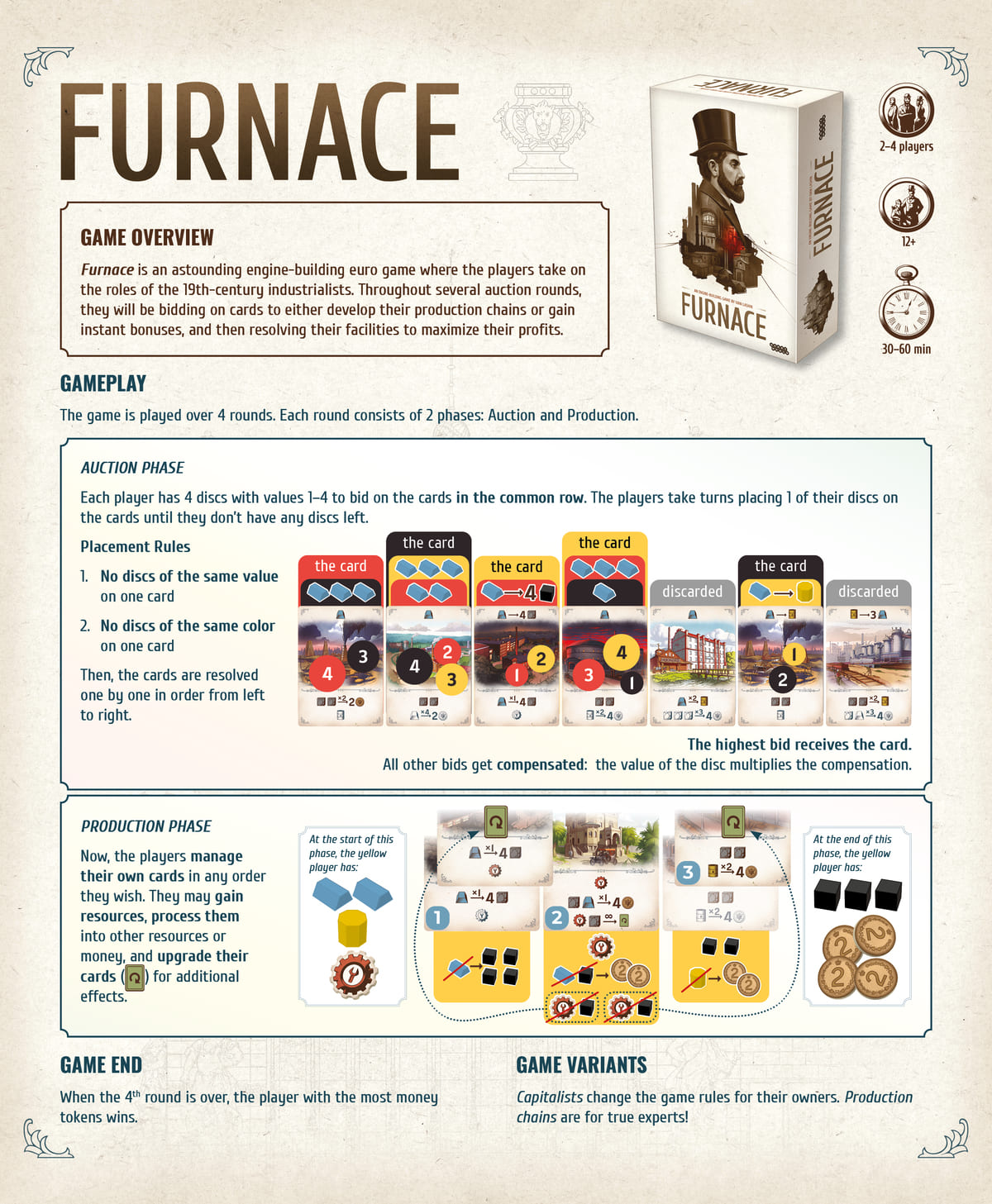Furnace is a board/card game by Ivan Lashin. The description at Board Game Geek starts like this:
“Furnace is an engine-building Eurogame in which players take on the roles of 19th-century capitalists building their industrial corporations and aspiring to make as much money as they can by purchasing companies, extracting resources, and processing them in the best combinations possible.”
Although it is described as a Eurogame, it doesn’t have the more traditional worker placement mechanic found in large numbers of games of that type. The two mechanics in the game are bidding and engine building. The game is small and light in physical weight with fairly good quality components except for the cards that seem flimsy and more like paper than like playing cards. Sleeving might be necessary to give this game a little durability.
:strip_icc()/pic5934958.jpg)
The game is played in four rounds and each player gets four bids per round (except for when one player has the ability to bid five times). Bidding is unusual in that players have four different size bids that are represented by disks of different sizes (with the value printed on them) and a player can only bid once on a company and the bid size can never be the same as any existing bids. A “company” is represented by a card that provides resources and production abilities and there are always six companies available during a round. The second novel aspect of bidding in this game comes from the way the losing bidders get resources based on a resource shown on the company card and multiplied by their losing bid amount. It is normal and common to bid in a way that loses the card to another player in order to get the resources on the card! The winning bidder will get the card itself once the bidding is over.

The instructions image above is a bit complicated for a review but a few things are easy to describe. In the bidding instructions, you can see the bidding discs in each player’s color and how they are placed on various company cards. These instructions also describe what each player gets based on their bids with the winners just getting the cards.
After bidding is complete and winners and losers get their resources or cards, each player simultaneously does production by activating the power on the bottom portion of their cards. The cards are double-sided and one ability that each player has is the ability to upgrade a card and flip it to the side that provides more production actions. Those extra actions are visible but “ghosted” (not colored) on the non-upgraded side of the card so players know what they will get from an upgrade.
The game is quite simple to play. The challenge is found in picking the best cards and the best bid amounts. When you lose a card you want, subsequent bids in the current and future rounds might be different to account for the loss or to account for some other unexpected win. As I said before, you might want to bid on a card hoping to lose the bid and get the resources instead. Accidental winning of a bid is very possible and even fairly common.
The game is fun and challenging. I have not played it enough for it to become stale so I don’t know if there is a lot of replayability. But I tend to like to replay games like this because I can’t always win and I sometimes do terrible (losing to my daughter 32 to her 64). At this point in time, I recommend this game. On BGG, I gave it a 7 and I’m thinking of increasing that rating to 7.5.
